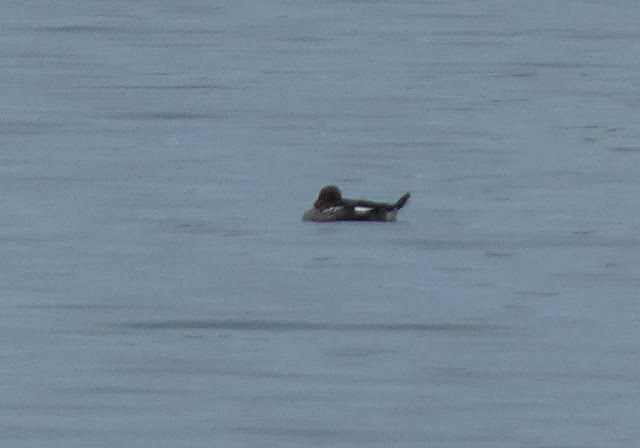This was my second visit to Rainham Marshes since the reserve reopened last week. It was a very cloudy morning when I started out at Rainham West. There were still plenty of Reed Warblers in the reeds and I managed to see a Sedge Warbler as well but it took a lot longer today to catch up with Common Whitethroat, Blackcap and Chiffchaff. The only Mute Swan of the day was still on the channel where I saw it last week but otherwise the marshes were fairly quiet. There was a regular commute of Stock Doves flying over heading towards the river.
 |
Mute Swan
|
Rather than take the longer river route I cut up the path alongside Coldharbour Lane hoping, but failing, to connect with the mega-elusive Corn Buntings. A couple of Rooks flew over to the tip but the large flock that had been on Wennington Marsh had disappeared, along with all the Jackdaws. I had a scan from the Serin Mound and located a single immature male Marsh Harrier. This was the only one I saw all day which was surprising as there were two family parties around last week.
With waders being reported in Aveley Bay I decided to head down there as it was now low tide. Small groups of Black-tailed Godwits patrolled the shoreline, resplendent in their summer plumage while the young Avocets had grown up and were starting to resemble their parents. Three Curlews completed the collection of long-legged waders but the only shorter-legged ones were a pair of Oystercatchers. A scan through the gulls on the foreshore produced a single adult Yellow-legged Gull but there were hundreds more gulls in the bay that were a bit too far to check through.
 |
Black-tailed Godwits
|
 |
Oystercatcher
|
 |
adult Yellow-legged Gull
|
As the reserve had just opened I decided to do a circuit. I stopped just past Purfleet Hide and suddenly noticed a large bird up high. Through the bins it was clearly a White Stork so I had few more seconds to enjoy watching this great bird circle slowly slowly around before putting the news out. This was the seond White Stork I'd seen at Rainham in two years. By the time I'd finished on the phone I'd lost the bird and couldn't relocate it. This may have been the same bird that was seen yesterday over the tip but, weirdly enough, about the same time I was watching it, three White Storks were seen just across the river over Crayford Marshes.
As I couldn't refind the bird I continued round to the dragonfly pool to look for the Bearded Tits. There were a couple of young birds feeding on the ground and a few more flew in and two landed on the grit tray and gave fabulous views.
 |
Bearded Tit
|
As I walked towards the Butts hide, a Clouded Yellow flew past, the first one I've seen this year and I had another near Aveley Pools. From the hide I saw a few Little Egrets and a Yellow Wagtail flew over. The Target Pools had dried out again so there were no waders on show so I made my way round to Aveley Pools. A flock of Black-tailed Godwits were roosting on the pools with a couple of Lapwing. At the Ken Barrett hide there was no sign of the Garganey that had been present since last weekend but I did see a Little Ringed Plover and a Hobby flew over. The woodland held a few Chiffchaffs but was otherwise quiet so I decided to call it a day.
 |
Little Egret
|







































